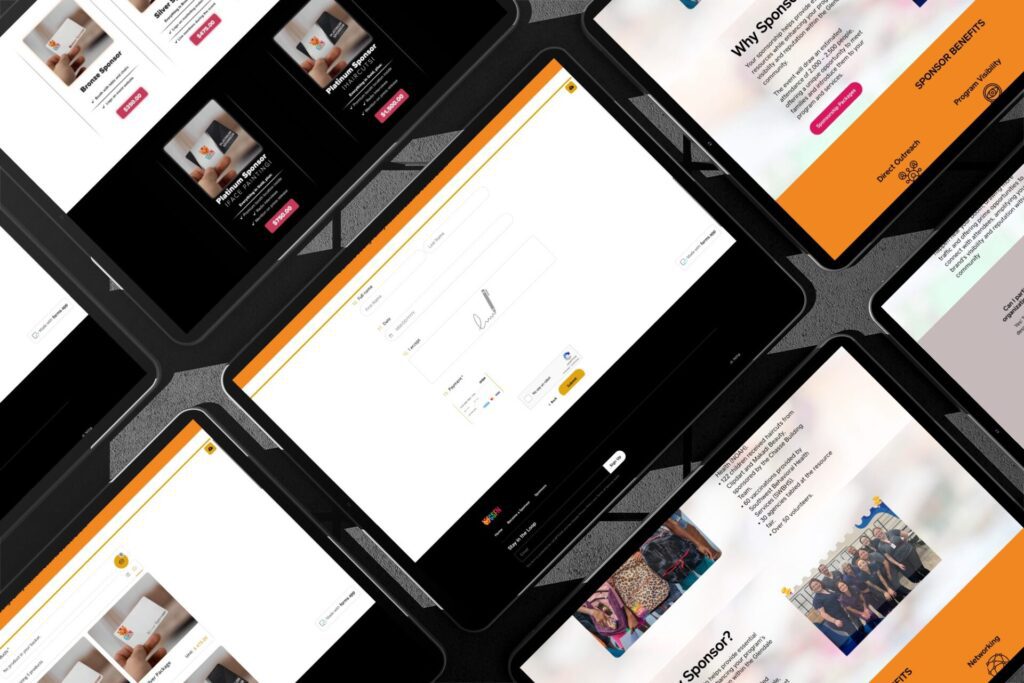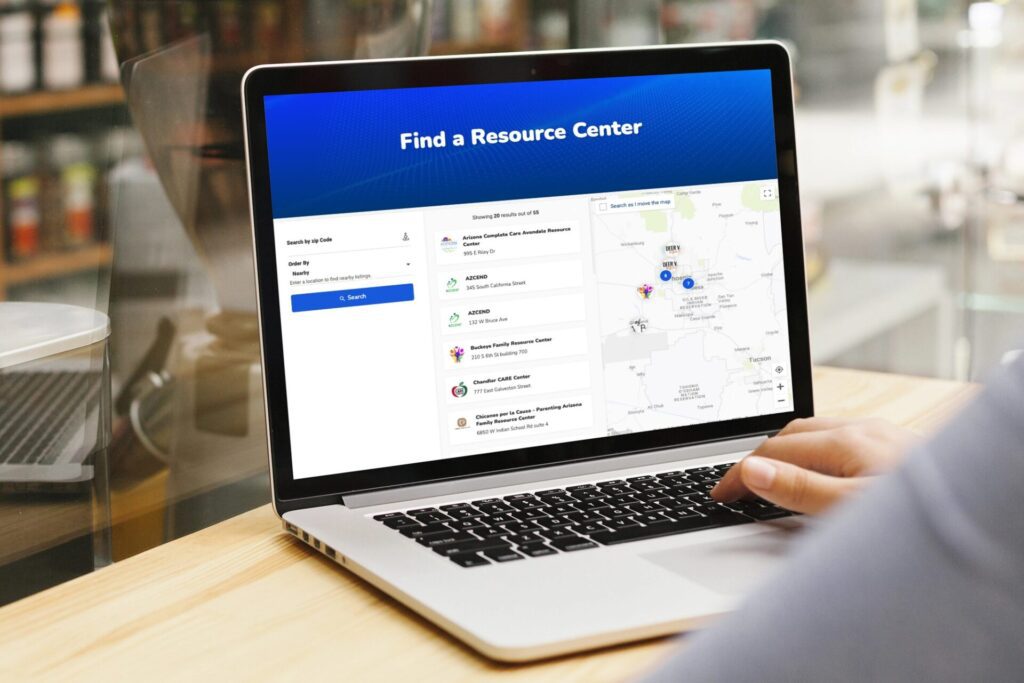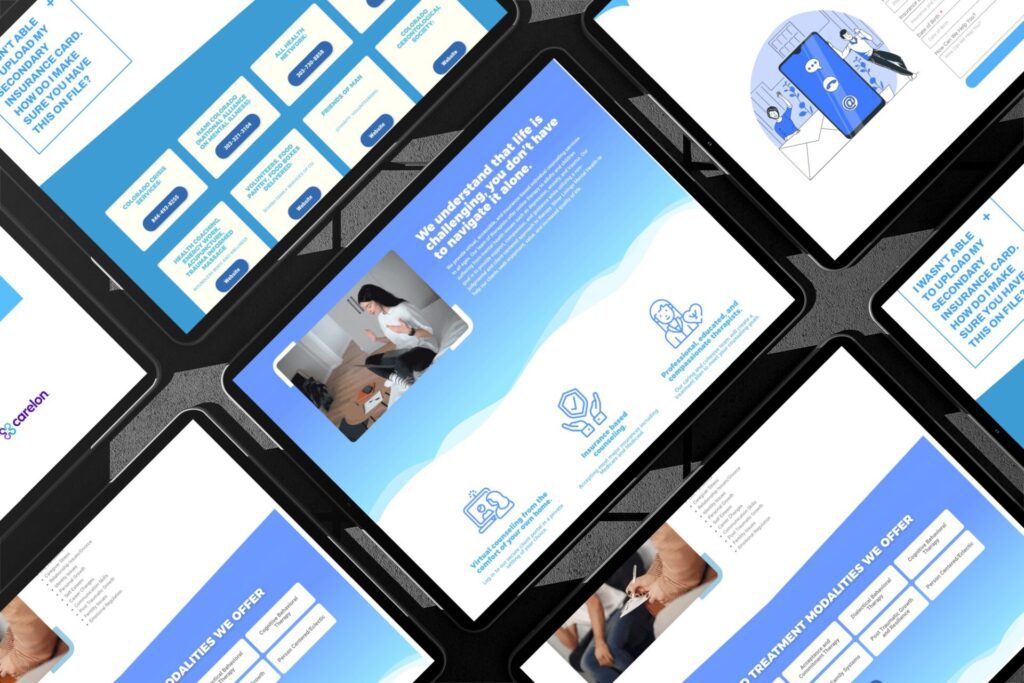Website design is one of your most important marketing tools. The first impression your website makes on visitors can establish credibility and set the tone for user experience, making it crucial for attracting and retaining users.
So what makes a website stand out and keep people coming back?
Impactful website design is a combination of excellent user experience (UX), responsive design, and search engine optimization (SEO). We’ll break down each concept and review recent web design case studies.
User Experience (UX)
UX refers to the overall experience a user has while interacting with your website. A good UX design ensures that visitors find your site easy to navigate, intuitive, and enjoyable to use. Key elements of excellent UX include:
- Ease of Navigation
- Intuitive Design
- Accessibility
A strong UX leads to improved user satisfaction, higher engagement, and lower bounce rates. When users have a positive experience, they are more likely to stay longer, explore more pages, and ultimately, convert into loyal customers or supporters.
Responsive Design

Responsive design ensures that your website looks and functions well on all devices, whether it’s a desktop, tablet, or smartphone. This adaptability is crucial for providing a consistent user experience, regardless of how visitors access your site.
Statistics show that over half of all web traffic comes from mobile devices. Without a responsive design, you risk alienating a significant portion of your audience. The benefits of responsive design include:
- Consistent User Experience
- Improved SEO Rankings
- Cost-Effective and Future-Proof
Search Engine Optimization (SEO)
SEO is the practice of enhancing your website to rank higher on search engine results pages (SERPs). A well-designed website plays a significant role in SEO, as search engines favor sites that provide excellent user experiences and meet technical standards. Key elements of SEO-friendly design include:
- Mobile-Friendliness
- Page Load Speed
- HTML Tags and Structure
- Quality Content
The impact of SEO on your website’s visibility cannot be overstated. Better search engine rankings lead to increased organic traffic, which in turn, enhances brand awareness and drives conversions.
Now for some concrete examples. Here are some web design case studies.
Case Study: Glendale Strong Family Network Back to School Event

The Glendale Strong Family Network (GSFN) approached us to create a dedicated website for their Annual Back to School Event. The goal was to streamline the event management process and provide a centralized platform for sponsors and attendees. Key capabilities of the site included:
- Payment Portal for Sponsorship Applications: We integrated a secure payment portal that allowed sponsors to apply and pay for sponsorships directly through the website. This streamlined the sponsorship process and increased sponsor participation.
- Event Information and Sponsorship Promotion: The website provided detailed information about the event, including schedules, activities, and sponsorship opportunities.
The impact of this project was significant. The new website not only facilitated a smoother event management process but also enhanced sponsor engagement. By providing an easy-to-navigate platform, GSFN saw an increase in sponsorship applications and attendee registrations, contributing to the overall success of the event.
Case Study: Arizona Family Resource Network

The Arizona Family Resource Network (AzFRN) needed a website that would amplify their impact and provide valuable resources to families across the state. Our team built a site with the following key capabilities:
- Members-Only Page: A secure area for network members to access exclusive educational resources, fostering a sense of community and collaboration among members.
- Comprehensive Directory Map: An interactive map that helps users find family resources in their area, making it easier for families to access the support they need.
This project greatly improved the user experience for AzFRN members and the families they serve. The members-only page provided a valuable resource hub, while the directory map enhanced accessibility to vital services. As a result, AzFRN’s website became a central tool for community support and engagement.
Case Study: Silver Linings Mental Health

Silver Linings Mental Health (SLMH) sought our help to redesign their website with a focus on enhancing user experience and improving their search engine rankings. The key aspects of the redesign included:
- Enhanced User Experience: We revamped the website’s layout to make it more intuitive and user-friendly, ensuring that visitors could easily find information about services, resources, and contact details.
- SEO Improvements: By optimizing the site’s content and structure, we ensured that SLMH ranked higher on search engine results pages, increasing their visibility to potential clients.
The new design made the site more appealing and easier to navigate and improved SLMH’s online presence overall. Higher search engine rankings led to increased organic traffic, helping more individuals find and access their mental health services.
Conclusion
A professionally designed website is essential for any organization looking to succeed. By focusing on key aspects like User Experience (UX), Responsive Design, and Search Engine Optimization (SEO), you can ensure that your website not only attracts visitors but also converts them into loyal customers.
Contact us to get started on your website!


